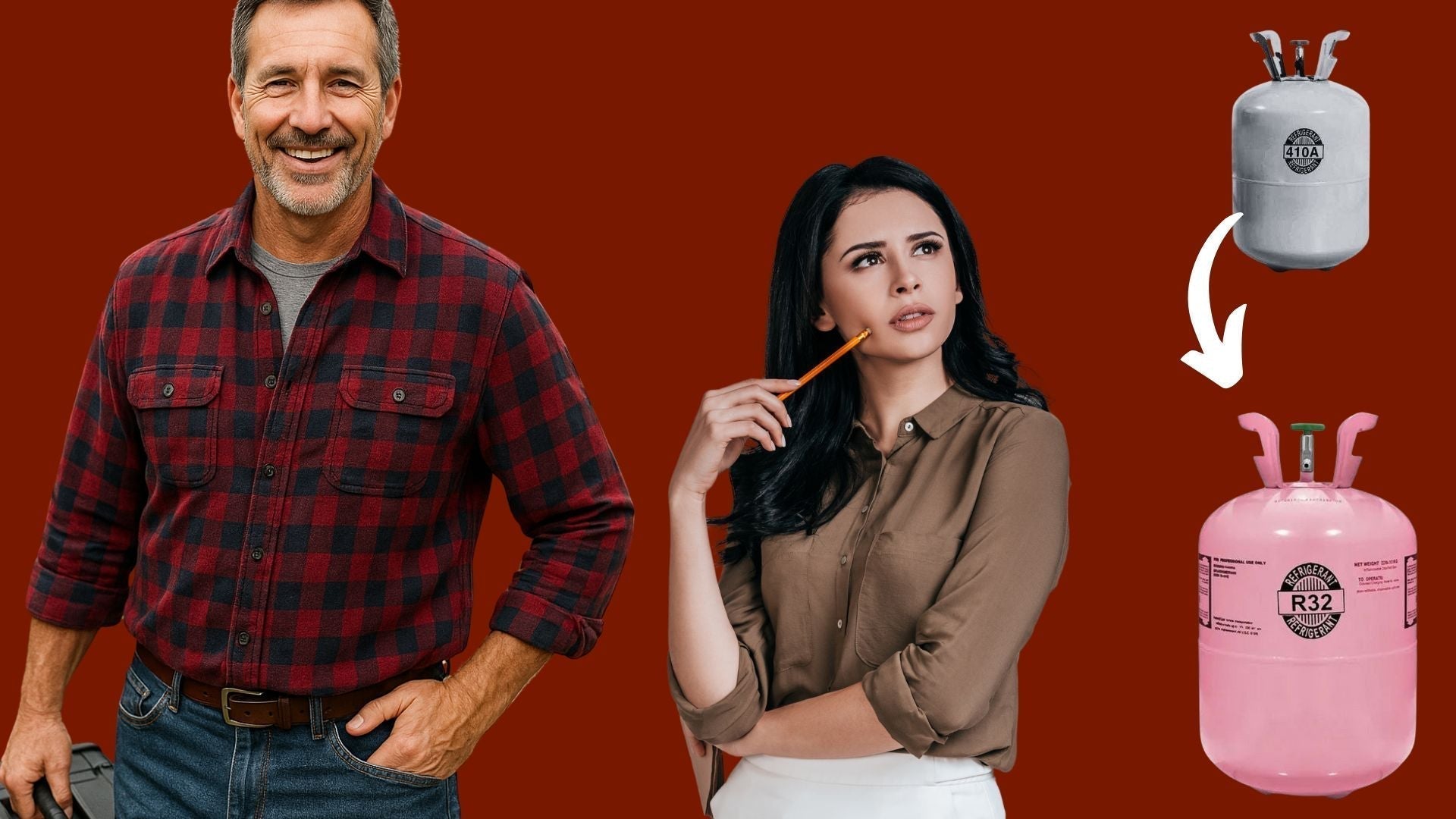Hey, it’s Mike. Look—I get it. Refrigerant probably isn’t the most thrilling dinner table topic. But if you’re upgrading your HVAC system (or even just thinking about it), what’s inside those copper coils matters more than you’d think. And between R-32 and R-410A, there’s a clear winner when it comes to your wallet, your comfort, and the planet.
Let’s pull the curtain back on these two and figure out what makes R-32 not just different, but flat-out better.
What Even Is R-32?
R-32, or difluoromethane if you’re into chemistry, is an A2L refrigerant—which means it’s low in toxicity and mildly flammable (but not dangerously so). It’s quickly becoming the gold standard in new air conditioning systems thanks to its:
-
Higher efficiency
-
Lower global warming potential (GWP)
-
Lower charge requirements (you don’t need as much of it)
Compare that to R-410A—a blend of two chemicals (R-125 and R-32) that’s been the go-to for years but is now being phased out globally due to its high GWP.
R-410A: The Old Standard with Growing Problems
R-410A systems used to be the best you could get, but they come with some drawbacks:
-
High GWP (~2,088 compared to R-32’s ~675)
-
Higher refrigerant volume needed
-
Harder to recover and recycle
-
Increasing restrictions and regulations—which mean higher service costs
And if you’ve been paying attention to HVAC news, you’ll know R-410A is on its way out. Europe already started the process years ago, and the U.S. is catching up fast.
Don’t just take my word for it—Climate Control News outlines how R-32 is becoming the preferred low-GWP option in residential systems worldwide.
Why R-32 Systems Just Make More Sense
Let’s break it down, side by side:
| Feature | R-410A | R-32 |
|---|---|---|
| GWP | ~2,088 | ~675 |
| Efficiency | Lower | Higher |
| Refrigerant Volume | Higher | Lower |
| Flammability | A1 (non-flammable) | A2L (mildly flammable) |
| Cost to Recharge | Higher | Lower |
| Environmental Impact | Higher | Lower |
Bottom Line?
R-32 checks all the boxes: it’s cheaper to run, easier to service, better for the environment, and gives your system a longer life span thanks to improved heat transfer.
Are R-32 Systems Safe?
Here’s where folks get nervous: “But Mike… R-32 is flammable, right?”
Yeah, mildly. But unless you’re planning on using your condenser as a grill, you’re fine. Modern systems are built to strict UL standards, and professional installs are designed to handle this refrigerant safely.
In fact, Energy.gov has published reports confirming R-32’s safety when used as intended in sealed systems.
How It Saves You Money—Today and Long Term
Lower Equipment Cost
R-32 systems typically require less refrigerant per unit than R-410A. That means less material, lower weight, and cheaper production. For homeowners? Lower price tags.
Carrier’s own tech reports even outline how R-32 allows for more compact, cost-effective AC designs.
Lower Energy Bills
Because it transfers heat better than R-410A, R-32 doesn’t make your compressor work as hard. Less strain = lower energy usage = more savings on your monthly bill.
Fewer Service Headaches
R-410A is harder to reclaim, tougher to recycle, and costlier to top off if there’s a leak. R-32? Easier on your tech, your system, and your budget. It’s a win all around.
Don’t Forget About Rebates
Switching to a high-efficiency R-32 system—like the ones in this R-32 AC and Gas Furnace collection—could make you eligible for local and federal HVAC rebates.
Sites like DSIRE can help you check if you qualify for energy-efficiency incentives in your area.
Wrap-Up: Is It Time to Make the Switch?
If your system’s older than your first smartphone, it’s probably time for an upgrade. And if you’re stuck choosing between R-410A and R-32, let me make it easy:
👉 Go with R-32.
It’s leaner, greener, and it just works better for your home and your wallet.
And if you're still shopping around, take a look at this Goodman 3 Ton 15.2 SEER2 R-32 AC and Furnace System. It's built with the right refrigerant, and priced right for folks like us.
My Next article is on: What Is a Dual-Fuel HVAC System—and Should You Upgrade to One?
Catch you in the next post,
– Mike







